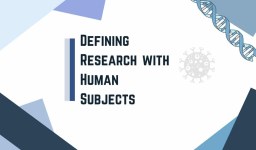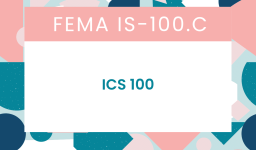Unlike NK cells of the innate immune system, B cells (B lymphocytes) are a type of white blood cell that gives rise to antibodies, whereas T cells (T lymphocytes) are a type of white blood cell that plays an important role in the immune response. T cells are a key component in the cell-mediated response—the specific immune response that utilizes T cells to neutralize cells that have been infected with viruses and certain bacteria.
There are three types of T cells: cytotoxic, helper, and suppressor T cells. Cytotoxic T cells destroy virus-infected cells in the cell-mediated immune response, and helper T cells play a part in activating both the antibody and the cell-mediated immune responses. Suppressor T cells deactivate T cells and B cells when needed, and thus prevent the immune response from becoming too intense.
An antigen is a foreign or “non-self” macromolecule that reacts with cells of the immune system. Not all antigens will provoke a response. For instance, individuals produce innumerable “self” antigens and are constantly exposed to harmless foreign antigens, such as food proteins, pollen, or dust components. The suppression of immune responses to harmless macromolecules is highly regulated and typically prevents processes that could be damaging to the host, known as tolerance.
Terms and Answers to Learn
a. Includes cilia, mucous membranes, dendritic cells
b. Immunological response brought about by antibody production
c. Immunological response that kills infected host cells
d. Use(s) BCRs to recognize epitope. First step in clonal selection
e. Phagocytes that engulf anything foreign. Eventually display epitope to helper T cells using MHC I or II
f. Lymphocytes that activate B cells and CTLs
g. Differentiated B cells that are stored in lymph nodes to provide protection against future infections by the same pathogen
h. Produce and secrete antibodies
i. Kills infected host cells
b. Humoral Immunity
c. Cellular Immunity
d. Immature B cells
e. Dendritic cells
f. Th cells
g. Memory cells
h. Plasma cells
i. Cytotoxic T cells
The primary immune response involves
an immediate increase in the concentration of antibodies, followed by an immediate and sharp decline.
a slow rise in the concentration of antibodies, followed by a gradual decline.
a slow rise in the concentration of antibodies, followed by a rapid decline.
an immediate increase in the concentration of antibodies, followed by a slow decline.
Indicate the correct order of events for the mechanism of antibody-mediated immunity
Antibodies
B-cell
Extracellular antigen
Plasma cell
1. Extracellular antigen
2. B cell
3 Plasma cell
4 Antibodies
Please sort each of the following descriptions of essential humoral and cellular immune factors to its corresponding item from A to E.
1. This molecule is made up of protein chains that form a complex with antigens. This complex serves to tag foreign cells and molecules for destruction by phagocytes and complement.
2. This cell is responsible for the enhanced secondary response to an antigen and is produced via clonal selection and differentiation of B cells
3. This cell is an effector cell that has the ability to recognize and kill target cells that are considered nonself cells
4. The helping function of this cell is activated by two signals; one signal occurs with the binding of the T cell receptor (TCR) to a processed antigen, and the second signal is a costimulatory cytokine.
5. This cell becomes activated when its immunoglobulins binds to its specific epitope, and in order to be activated, it may require assistance via helper cells.
A. T helper cell
B. Memory cell
C. B-cell
D. Antibodies
E. Cytotoxic T lymphocyte
2) Memory Cell (B)
3) Cytotoxic T lymphocyte (E)
4) T helper cells (A)
5) B cell (C)
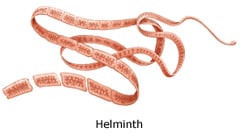
Helminth
Th2 cell
Hint: The cell type will be a helper cell that produces cytokines to signal other cells (specifically the eosinophils) to help with the removal of this large extracellular parasite.
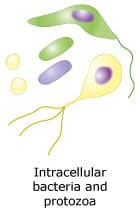
Intracellular bacteria and protozoa
Hint: The cell type will be a helper cell that produces cytokines (specifically IFN-y) that stimulate the macrophages and allows for phagocytosis
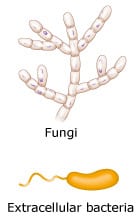
FungiExtracellular bacteria
Hint: The cell type is a helper cell that produces large quantities of a specific cytokine, IL-17, which recruits the neutrophils to induce phagocytic activity and clear extracellular pathogens.
This time of immunity is acquired via injection of antibodies from an individual or host that has immunological memory to the specific pathogen or antigen.
Hint: What makes this time of immunity unique is that antibodies are introduced from another host. Does this sound like an active or passive process? And would you consider this to be naturally or artificially acquired?
This type of immunity is acquired via the passing of antibodies from a mother to a child to give immunity during the development of the child’s immune system.
Hint: What makes this type of immunity unique is that antibodies are passed to the child through the placenta or the mother’s milk. In this case, does the child acquire the antibodies actively or passively? And would you consider this to be naturally or artificially acquired?
This type of immunity is acquired when a person is vaccinated for a specific type of infection via the introduction of antigens. These antigens normally have undergone some type of modification and may not confer the same type of long-lasting memory that would occur with unmodified antigens.
Hint: What makes this type of immunity unique is that modified antigens are used to elicit an immune response. Does this sound like an active or passive process? And would you consider this to be naturally or artificially acquired?
This type of immunity is acquired when antigens enter the body and an infection occurs. The immune system works to fight the infection via the innate and adaptive immune responses and creates an immunological memory of that particular antigen.
Hint: This type of immunity is not very unique in that it is acquired through daily exposure to antigens that are introduced via many different mechanisms, including everyday activities such as eating and breathing. These antigens may or may not produce a serious infections, but they do serve to create immunological memory. When they cause infection, they elicit a primary and secondary immune response. Does this sound like an active or passive process? And would you consider this to be naturally or artificially acquired?
Humoral immunity involves B cells and the production of antibodies
Antigens are usually proteins or large polysaccharides
A) A plasma cell
B) a macrophage

